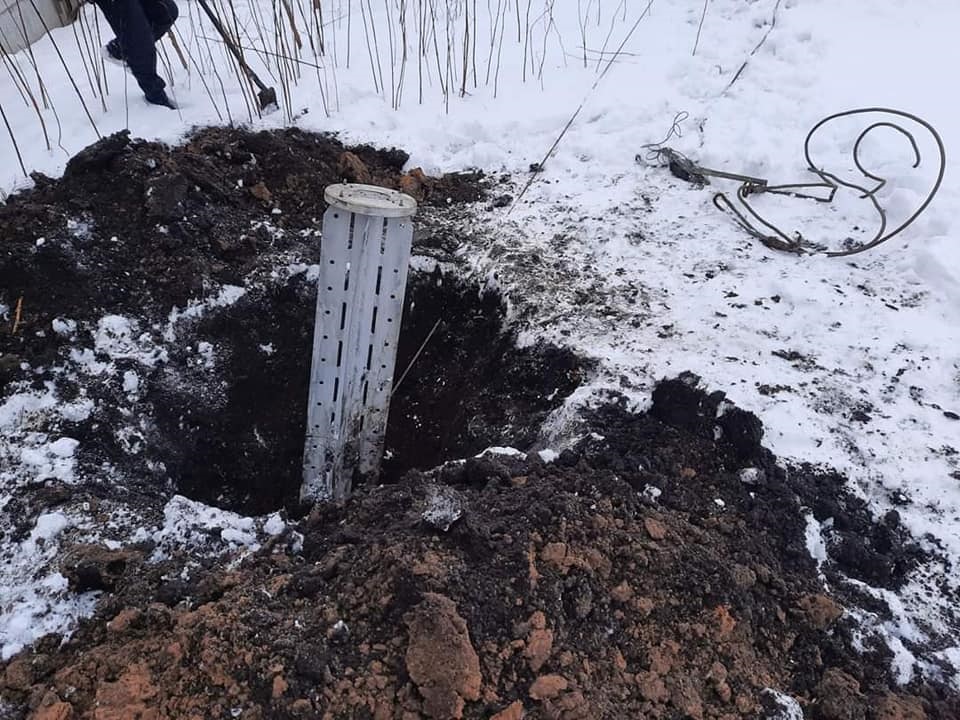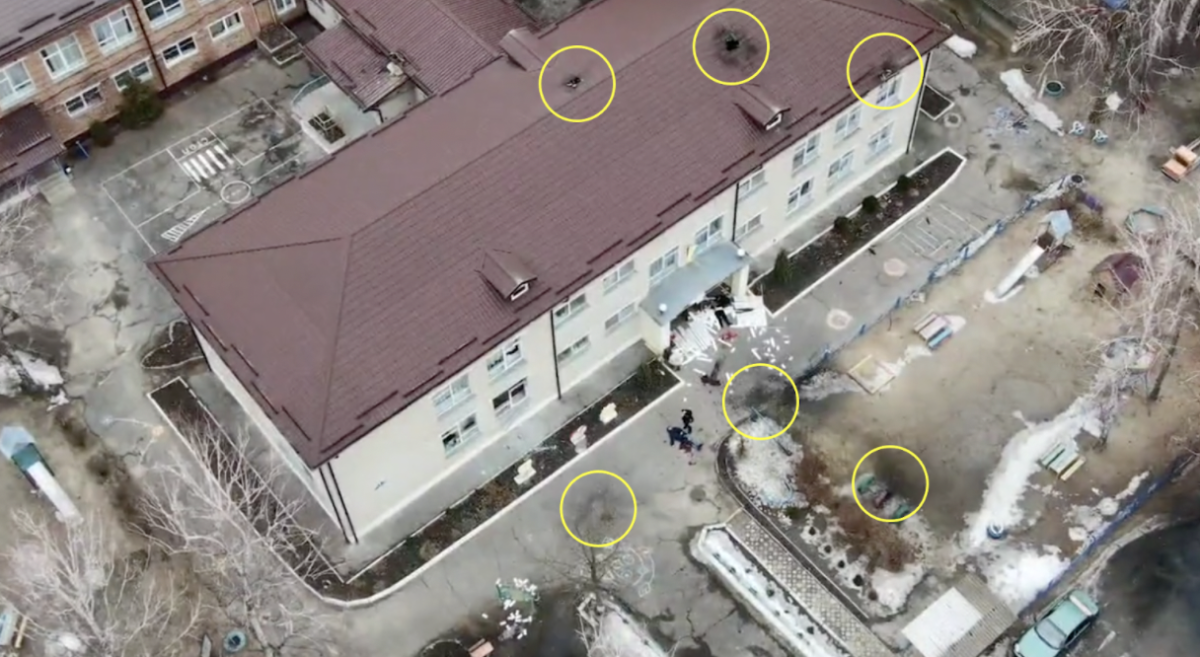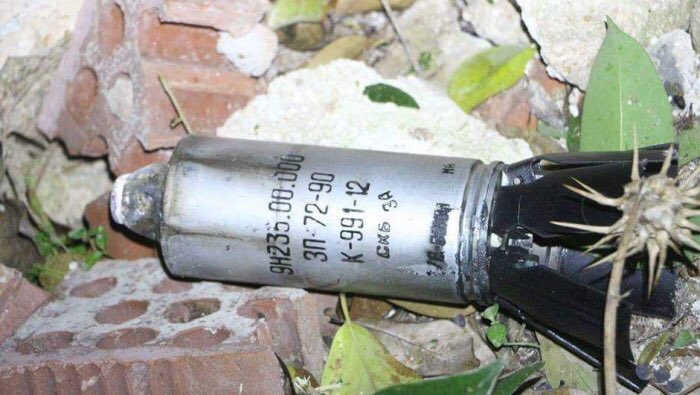Accusations of Cluster Munition Use by the Islamic State in Kurdish Syria
In an article published yesterday on the Arabic language news website ANHA, claims were made by local Kurdish groups in the town of Ayn al-Arab (also know as Kobanê) that during attacks by the Islamic State cluster munitions had been used. They warned against touching the unexploded submunitions, claiming an 11 year old child had been killed while handling one of the unexploded submunitions, in an incident that also injured an 8 year old child.
Along with the article were images of the cluster submunition used, seen below
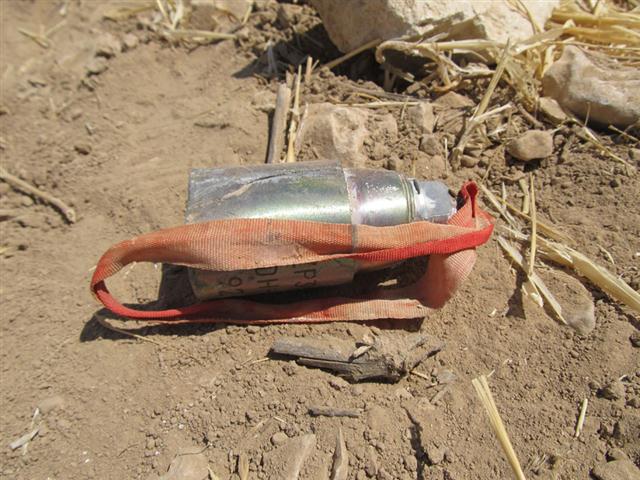
This type of cluster submunition has been seen before in Syria, with the following video showing an example from June 2014 in Homs
The red ribbon visible in these images are part of the arming mechanism. As they are deployed, the ribbon causes the submunition to spin as it falls, causing the arming pin the ribbon is attached to to be pulled out, arming the submunition. In the example in the video, the arming pin can be seen sticking out the side of the neck of the submunition, showing this is a live submunition. In the below image from the set posted by ANHA we can see the arming pin is still in place, and that the submunition is unarmed. A tug at the red ribbon would likely arm the submunition, causing it to explode, demonstrating why these are an extremely deadly persistent threat to civilians long after they’ve been used
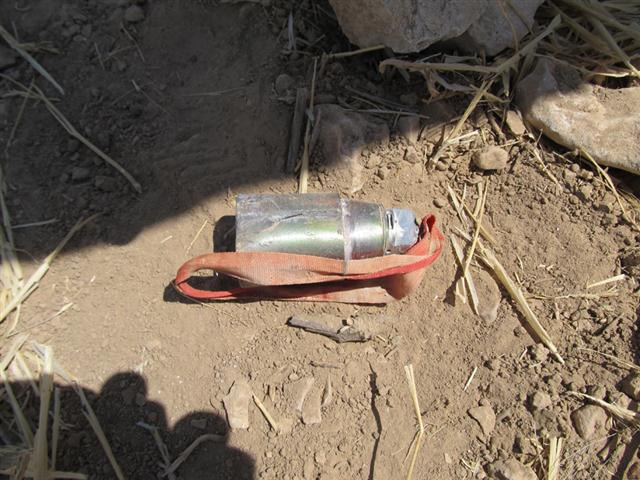
While the type of cluster submunition has been seen in Syria before,it’s still unclear what the country of origin is for it. Currently it’s know as ZP-39, and appears to be similar to the design of submunitions used with the Egpytian Sakr 122mm cluster rockets that have been used in Syria over the past year. This may suggest this is delivered by an as yet unidentified type of 122mm cluster rocket, something the Islamic State would be capable of launching.
Cluster munitions are seen as indiscriminate weapons, leaving a legacy of unexploded ordnance that can take years, even decades to eliminate. Their use is covered by the Convention on Cluster Munitions, which effectively bans their use and production by countries who have ratified the treaty. As yet, countries including Syria and the United States have yet to ratify the treaty.
